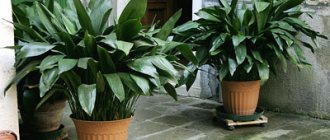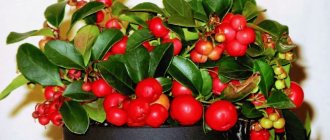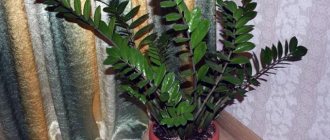The Haworthia genus includes more than 80 species of leafy, dwarf succulents native to the arid regions of central and western Africa.
The genus owes its name to the 18th century English botanist Adrian Haworth, who was the first to classify these amazing plants.
The huge diversity of species, the bizarre shape of the foliage of some specimens and ease of care have made Haworthia one of the most popular succulents for indoor growing.
Depending on the species, the height of the slow-growing plant is approximately 8-20 cm. The fleshy and hard leaves of many members of the genus are very similar to those of agave or aloe.
Collected in dense, low rosettes, they serve as a reservoir of life-giving moisture, which the plant needs during periods of prolonged drought.
Leaf structure and color can vary greatly even within the same species. Their color varies from light green to dark green, olive or bronze. They can be either smooth or jagged along the edge, many are covered with tubercles-growths.
Haworthia mix
Some species are striking with their translucent structure - these are the so-called fenestrate leaves, on which there are areas in the form of “windows” that transmit sunlight into the internal body of the plant, rich in chlorophyll-containing cells.
Leaf windows greatly increase the photosynthesis area by allowing light to enter the center of the succulent while avoiding water loss.
In the spring-summer period, small white or cream, tubular flowers appear at the top of a thin and rather long peduncle.
Haworthia flowering
However, at home, haworthia blooms only if all growing rules are observed - in an environment close to natural.
Description of the plant
Haworthia is a short plant with a slow growth rate. Most species form a basal rosette. They are similar to aloe, but more compact and showy due to their unique leaf structure and color. The color of the leaves varies from light to dark green, with bluish, silver, and brownish hues. The leaves are lanceolate in shape and have a rough surface. Volumetric strokes and specks of white or dark green color give the plant a picturesque appearance. It is worth considering how haworthia blooms.
Composition of haworthias
Haworthia can bloom at any time, but more often it occurs in the summer. Whitish small flowers appear on a thin peduncle. Haworthia flowering does not have decorative value and in some cases the flower stalks are removed so as not to weaken the plant.
Its unpretentiousness allows it to be used for landscaping any interior. It takes up little space and grows slowly, so it is often used in succulent compositions in bowls and on rocky hills.
Additional Information! Haworthia received its name in honor of the English naturalist Adrian Hardy Haworth (1768-1833). He spent a long time studying the flora and fauna of South Africa and made significant contributions to science, describing many species of plants in this region.
Transfer
It is important to remember that haworthia can be replanted no more than once every 3 years. Usually by this time the roots have completely mastered the volume of the pot allotted to them. The optimal shape of the planting container is wide and shallow. A small layer of drainage made of broken bricks, small pebbles or shells is placed at its bottom.
Important! If the pot turns out to be too high, then instead of growing the above-ground part, the haworthia will try to reach the bottom with its roots.
Buying haworthia to suit your taste today is not difficult. The popularity of its various varieties is very great and is not inferior to cacti or crassula. This plant belongs to the category beloved by many - “planted and almost forgotten.”
Main varieties
Haworthia striped and other species: home care
The genus belongs to the Asphodel family. Due to the ability to form hybrids both within the genus and with related varieties (Gasteria, Aloe). This is a fertile material for breeders.
Note! There are many hybrids and cultivars that differ in color, rosette size, and the number and shape of tubercles on the leaves.
Types common in indoor floriculture:
- Striped (or Haworthia fasciata) is one of the most common indoor species. Haworthia fasciata has a dark dense rosette, which is decorated with clear transverse stripes of white color. The leaves are pointed, slightly curved. Most of the white streaks are located on the underside of the sheet. Caring for striped haworthia at home involves moderate watering and timely replanting.
Haworthia fasciata
- The extended haworthia has a rosette of elongated triangular leaves, which are covered on both sides with small white tubercles. Decorative growths are located chaotically, sometimes merging into stripes.
drawn haworthia
- Sticky is a tall hybrid, reaching 20 cm in height. The small triangular leaves are concave and nested inside each other. They grow in three rows and form spectacular columns that from a distance resemble the scales of a snake. The color adds decorativeness - in some varieties a reddish or salmon tint is added to the main green.
Haworthia adhesive
- Haworthia sinuous is distinguished by a small trunk and small triangular leaves, the lateral surfaces of which are curved upward. The species is covered with small white dots.
Haworthia sinuous
- Scaphoid forms compact rosettes of light green, fleshy leaves with pointed ends. The wide, concave leaves resemble a boat. There are lighter, slightly translucent areas - leaf windows. Their purpose is to weaken the effect of the scorching sun. The species quickly produces daughter rosettes and fills the free space;
Scaphoid haworthia
- Haworthia pearl is distinguished by large rosettes of dark green leaves, on which there are white round protuberances resembling pearls. It blooms, like most succulents, with miniature bell-shaped flowers on long stalks.
Pearl look
- Reinwardt - forms a stem up to 20 cm high, on which short dark green leaves with a pointed tip are densely planted, overlapping each other. They have decorative convex tubercles.
Haworthia reinwardtii
- Blunt or Haworthia retusa - has a wide rosette of fleshy, hard leaves with truncated tips. The color ranges from bright green to reddish; with a lack of lighting, the red tint intensifies. Veins are visible on the leaves.
Haworthia retusa
- Checkered (checkered) forms stemless rosettes with fleshy triangular leaves arranged in a spiral. On the upper part of the leaf plate there is a checkered pattern consisting of a grid of light and dark lines. The reverse side is covered with small tubercles. The edges of the leaves are sometimes decorated with teeth. Checkered haworthia is capable of forming shoots from underground stolons. In this species, a daughter rosette may appear at a distance of several centimeters from the mother plant.
Chess variety of Haworthia
Often in flower shops the haworthia flower, the types of which are very diverse, is presented as “haworthia mix”. At the same time, several varieties are planted in pots, making up a spectacular composition.
Classification and description of the genus of succulents Haworthia
Haworthia is a genus of succulent plants endemic to southern Africa. Belongs to the Asphodeloideae family. The first written records of Haworthia date back to the 1600s, when European colonists discovered new territories in southern Africa. The first to describe these low-growing plants was the British botanist Adrian Haworth. These succulents were subsequently named after him.
The variety of Haworthia forms is impressive.
After their discovery, Haworthia were included in the genus Aloe, but in the 19th century they were transferred to a separate genus of the family Asphodelaceae. In the 2010s, after genetic research, the genus Haworthia was divided into three separate genera: Haworthia (42 species), Haworthiopsis (18 species) and Tulista (4 species). There is still debate in scientific circles about the systematization of succulents of the genus Haworthia.
Many of the currently known varieties originated in Japan, since they were the first to cross different species of Haworthia. Today, hybrid varieties are created by many collectors around the world, as the popularity of these plants is growing every day.
Characteristics of plants of the genus Haworthia
Haworthia are low-growing plants, most species are characterized by low-growing rosettes of fleshy leaves. Many species of Haworthia are distinguished by their striking appearance and unusual shapes - from narrow leaves with black and white stripes, like a zebra, to transparent or translucent leaves. These small plants are memorable for their fleshy green leaves, generously covered with white “warts” or stripes that give them a distinctive appearance. In their natural habitat, these crops are quite difficult to find.
Photo of one of the Haworthia species in the South African desert
The desert plant Haworthia is a low-growing crop, the average height of the plant is 7-12 cm, the largest reach a height of about 50 cm. They are distinguished by fleshy, green leaves, often covered with white tubercles or stripes. Because of this feature of the foliage, these succulents are also called “Haworthia Zebra”. Leaves may have pointed, blunt or rounded tips. In some species the leaves may be hard and tough, while in others they are softer, leathery and translucent. These small succulents are very drought tolerant and do not require systematic care during the growing process. This makes them an excellent choice for growing indoors.
Flowers usually appear in the summer months at the end of a long stem (inflorescence) if they are properly cared for throughout the year. Haworthia flowers are not as colorful as the leaves, they are quite small and not as colorful. The flowers are usually double-tipped, small, tubular and attached to a long flower stalk, which may be simple or branched.
Haworthia, home care
Euonymus Winged, Fortune, European and other species
Haworthia is one of the few plants that can easily tolerate shade. In their natural habitat, these succulents are almost completely submerged in sand, often with only the tips of their leaves remaining on the surface. In addition, thanks to the hard epidermis, the plant is practically not susceptible to rotting.
Note! The succulent is suitable for making compositions in a florarium - a transparent container with plants inside.
Florarium for haworthias
Temperature
The air surrounding the plant should not be below +5 ℃. In winter, the temperature is maintained within 10-13 ℃ above zero. In summer, comfortable conditions are at a temperature of 20-25 ℃. Higher rates are not scary for Haworthia.
Watering and fertilizing
In winter it is rarely watered. The rest of the year - a moderate watering regime. The plant is moistened when the soil is completely dry, usually 1-2 times a week. It is advisable that moisture does not get into the center of the outlet, as this can cause rot.
The Haworthia flower, like many cacti, is resistant to dry air. Ambient humidity does not play a significant role. During active growth, from spring to autumn, fertilizer is applied once a month. Apply fertilizer for succulents or a weak solution of mineral fertilizer. In winter, fertilizing is not carried out.
Important! The transplanted plant does not need fertilizer for the first three months. The fresh soil mixture contains enough nutrients for active development.
Pruning and replanting
If the rosette has become too large for the flower pot, or many daughter rosettes have grown, the plant is replanted. Low wide capacity is suitable.
It is better to replant plants in the spring. At this time, the growing season begins and the flower easily adapts to new conditions. Haworthia succulent grows well in a mixture of coarse sand and nutritious soil, taken in equal proportions.
On a note! To maintain appearance, dead leaves are removed. After flowering, the flower stalks are removed.
Pests and diseases of Haworthia
Haworthia are generally rarely attacked by pests. The only exception is mealybugs, which can become a problem. But this can easily be solved by physical removal or using standard insecticides for indoor plants. More serious diseases are root rot caused by poor soil or overwatering. Sometimes root rot can penetrate into the stem of a plant, causing it to die.
Reproduction of Haworthia at home
Vegetative propagation, especially by children, is the simplest and most common method of propagation of Haworthia. Once new daughter rosettes are formed by the parent plant, they begin to develop their roots. In some species, young plants themselves separate from the parent; in other species, the rosettes are attached to the old flower. But they can be easily separated. Not all species of the genus Haworthia can be propagated by children.
To carry out this procedure, you will need a well-draining pot, soil mixture for cacti, and you can add pumice. Separate the daughter plant (preferably with a knife) as close to the mother rosette as possible so that the cutting has as many roots as possible. Leave them to dry for 24 hours. Then insert the cutting into a new pot and wait a week before watering. Water once a week in partial sun if the pot is kept outside or once every two weeks if kept inside in bright light. Be sure to water only the soil.
Reproduction of Haworthia by leaf
Used for those plants that never or rarely develop young rosettes. The best time to carry out this procedure is autumn and early winter. In such cases, mature leaves are carefully cut from the stem. As soon as the cut area is dry, the leaf should be placed in well-drained soil.
You can learn more about Haworthia leaf propagation from this video
The similarity in many cases is low, but one or more new rosettes will slowly develop from the cutting. This method is rarely used by amateur gardeners, but experienced collectors use it to propagate rare or slow-growing plants.
Haworthia can also be easily grown from seeds , but they are not so easy to obtain. It is better to buy from specialized nurseries of succulent plants. Seeds should be sown in a well-drained potting mix and the soil should remain moist until germination, usually 1-2 weeks. The soil should not be allowed to dry out significantly while the young seedlings are germinating.
Reproduction methods
Indoor spurge - white-veined, cypress and other types
Haworthias propagate by seeds or vegetatively - stem and sometimes leaf cuttings. Some species can produce side shoots - stolons. They are also suitable for breeding.
To obtain seeds, the most interesting species from the point of view of the grower pollinate among themselves. If pollination is successful, ripe seeds are collected and sown in a moist, mostly sandy substrate. To create a warm and humid microclimate, cover with film. Maintain temperature +20 ℃. Plants develop slowly; an adult developed specimen can be obtained in two years.
To propagate succulents from stem and leaf cuttings, they are dried before planting. This process, depending on the size of the cutting, may take 1-2 days. Then the cuttings are placed in moist coarse sand or perlite, where rooting occurs.
Propagation by cuttings
Daughter rosettes are separated during transplantation. The cut is sprinkled with coal and the young plants are planted in separate pots. This option is the simplest and allows you to get a well-formed rosette in a short time.
Interesting to know! The natives of South Africa consider Haworthia a medicinal and miraculous plant. They plant haworthias on roofs and decorate their homes with potted succulents, hoping that the plants will protect their homes from lightning and the influence of negative energies. Haworthia limifolia is especially valued by healers.
In some places, the demand for useful plants is so high that to meet it, they are considering obtaining Haworthias by micropropagation.
Growing problems
Darkening and rot on the leaves are a consequence of excess moisture. At the same time, stop watering, remove the affected parts of the plant and treat the rosette with a fungicide.
Rot on Haworthia
Succulents are less susceptible to pest damage than other houseplants. However, white cotton wool-like discharge from mealybugs can sometimes be seen on Haworthia. Most often they are located in the axils of the leaves or at the growing point. Mealy spots contain pest eggs and their larvae develop. Use a cotton swab dipped in a soapy solution to remove traces of insects.
Sometimes oval or round waxy shields of a brownish color appear on the plant. Beneath them are the larvae of scale insects, an insect that sucks plant juice. The shields are carefully removed with a brush and the plant is treated with soapy water.
Haworthias planted in open ground in summer suffer from slug attacks. Pests gnaw off young leaves, the plant loses its decorative appearance and dries out. If there are few slugs, they are collected by hand and destroyed. In cases where there is a massive pest invasion, the drug metaldehyde will help.
Additional Information! When pests become widespread, pesticides are used. Treatment with Actellik helps get rid of both scale insects and scale insects.
Despite the fact that haworthia is an unpretentious plant that is resistant to pests and diseases, preventive measures should not be neglected, because a disease is always easier to prevent than to treat. Preventive measures:
- inspection of plants upon purchase - the leaves of succulents must be dense, without damage and waste products of pests (black spots, cobwebs, plaque);
- quarantine of newly acquired specimens - young flowers are placed separately from the main collection and observed for two weeks; if no signs of damage are found, place the plant in the designated place;
- regular washing of plants.
Haworthia is easy to care for, making it easy for even novice gardeners to grow. Experienced hobbyists enjoy experimenting, making compositions from different species, growing haworthia in glass containers or creating miniature gardens.











